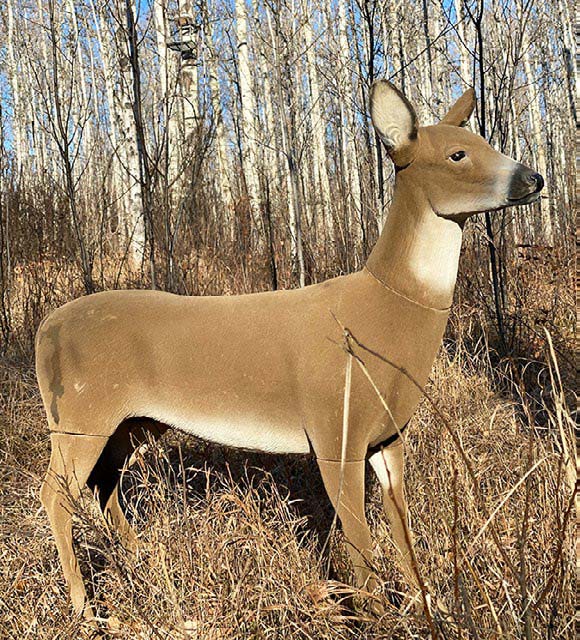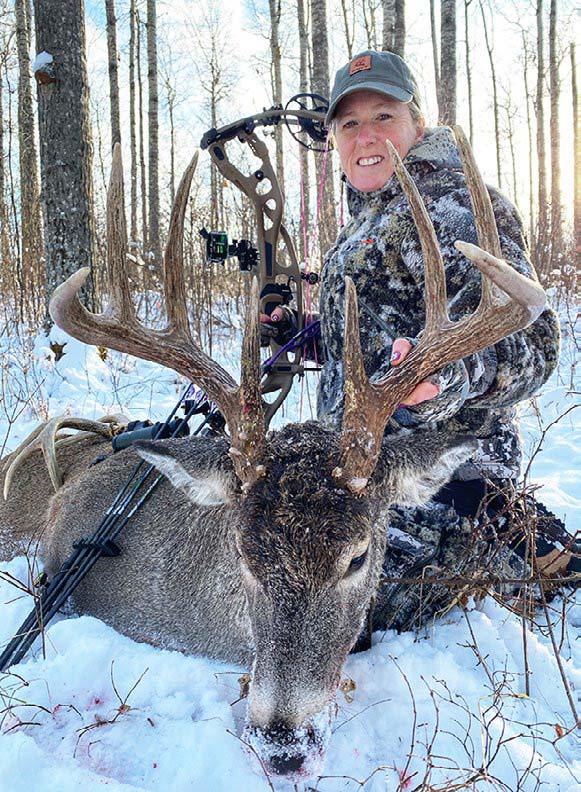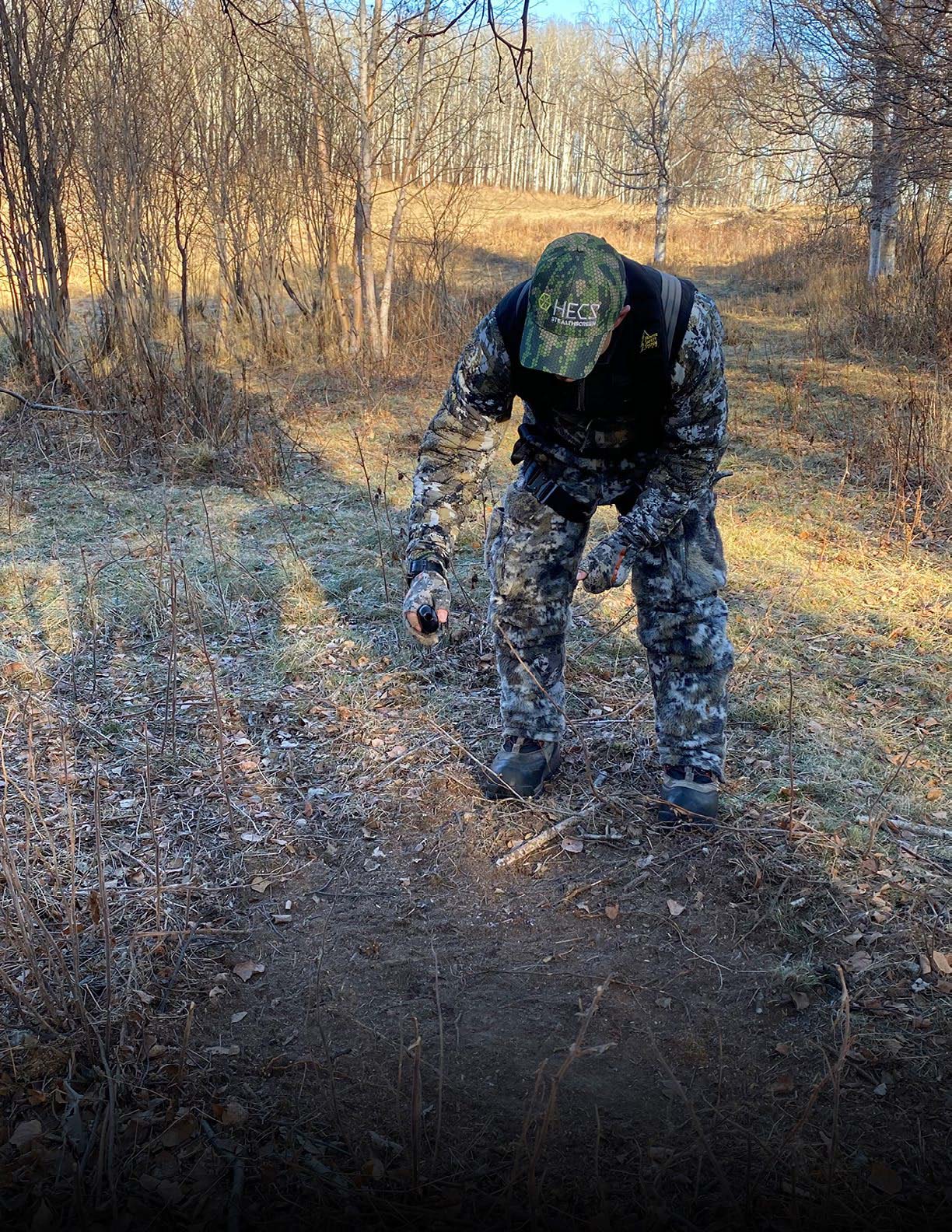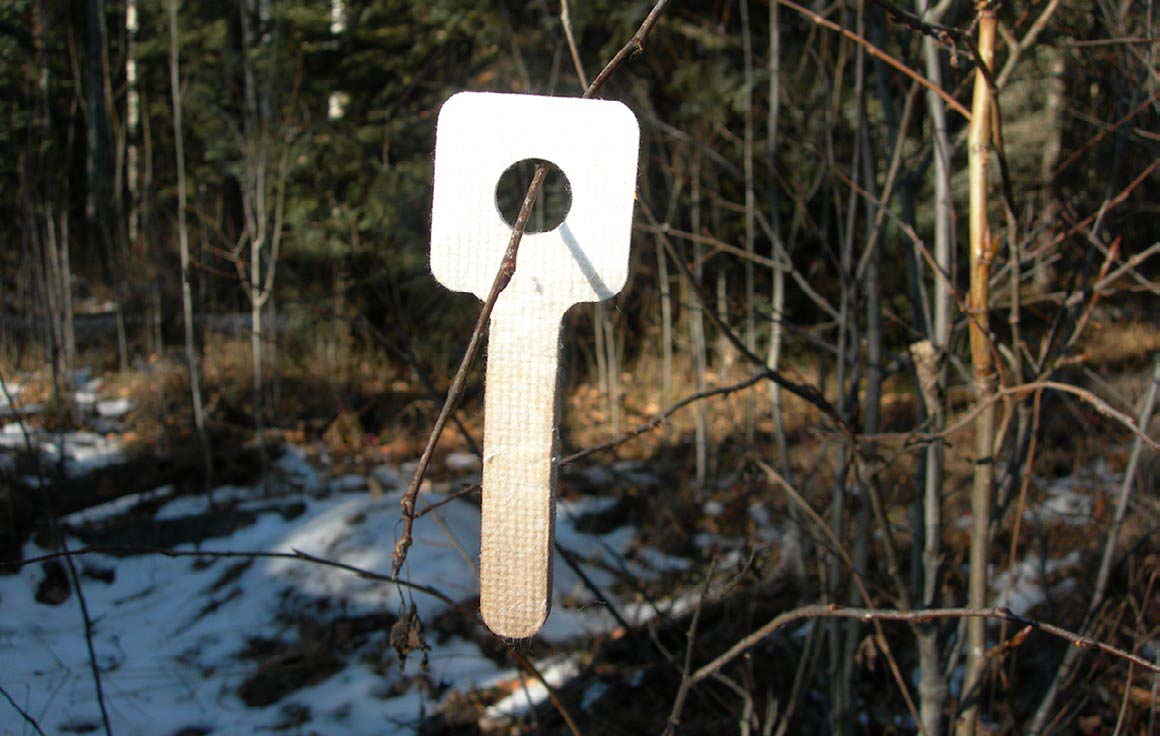Comparatively short-lived, the second estrus offers one of the best opportunities to tag a good Whitetail
The main event—or first estrus—has come and gone. You waited all year for it. For one reason or another, you weren’t able to fill your tag. Fear not, because round two is just around the corner. Believe it or not, the second estrus can be that much better than the first—especially if you want to take a mature, trophy-class buck.
To make the most of this unique and concentrated time, it’s important to understand what the second rut is, what deer are doing at this time and how best to capitalize.

DEFINING THE SECOND RUT
Volumes can be said about the Whitetail rut. Perhaps to over-simplify it, I’ll say that the rut cycle includes a pre-rut, first estrus (or main rut), a subsequent estrus (or second rut) and even a third round as well, albeit one that is much less pronounced. With the goal of seeking out and breeding does, bucks behave a bit differently during each of these general phases.
The first estrus, or the time that the majority of does go into heat, is a consistent occurrence. All things being equal it’s biologically impossible for this phase to be early or late. Under natural conditions, the rut is prompted by photo-phase. This means that as long as other factors like stress (hunting pressure or extraordinary environmental influences) don’t manipulate the deer, does will experience their 48-to- 72-hour estrus at essentially the same time each and every year. In Alberta, where I do much of my Whitetail hunting, that first estrus kicks in like clockwork. With almost no variation, it occurs between November 11 and 14. Even with extreme temperatures (hot or cold), this has been as reliable as the rising and setting sun.
Once that first round takes place and the bucks have locked does down for a few days, a second rut takes place. It is equally reliable and like clockwork, and does that weren’t bred during the first round will go into heat again.
This second estrus takes place seven to 10 days later. In Alberta, this is between November 21 and 25. In far southern jurisdictions like Texas, the first estrus occurs much later, but the time span between the first and second estrus is similar. Knowing that time is running out, Whitetail bucks are on their feet, moving feverishly to find receptive does. In fact, if you want to hunt the most vulnerable Whitetail bucks, this second rut is the time to do it.

SPOT-ON-THE-SPOT
If you plan to hunt the second estrus, it’s important to localize your efforts. Much like walleye fishing in the spring, you’ll want to sort out a key location that has all the action. Fail to do this and you might swear that all the deer have been beamed off the planet.
During the pre-rut and first estrus, bucks are routinely following scrape lines and making and working rubs. As things heated up, primary scrapes had guaranteed visitors. After the first estrus, those scrapes became less active. If you get regular snowfalls at this time of year, then you may have even noticed those scrapes getting covered up.
As the first estrus subsided, bucks more or less abandoned most of the scrapes, but this lull is short- lived. That’s because as the second round kicks into gear, the bucks know it and they frantically reopen those primary scrapes. Why? Because both does and bucks use these scrapes to deposit scent through urine and glandular secretions. Pheromones are detected by the bucks just as they were during the first round. Those scents once again signal that there’s a hot doe in the area. So, one of the best strategies during the second rut (just as it was during the first) is to hang a stand or place a blind on or near one of these reactivated primary scrapes. Find one in an area with the highest concentration of does and you’re in the game.
FOCUS ON FOOD SOURCES
Equally, if not more importantly, you need to find a great food source. If you’ve planted a food plot or have the ability to hunt on or near alfalfa crops or cornfields, these can be exceptional places to focus your attention during the second rut.
For many jurisdictions, particularly in the far northern Canadian provinces and northern United States, this often means snow and cold. These elements are both a blessing and a curse for hunters since the snow and cold make life tougher for deer. Whether they’ve been bred already or not, many does will begin transitioning into their early winter bedding and feeding patterns and localizing their attention on accessing available food. Knowing that the proverbial clock is ticking, bucks will be covering a lot of ground looking for hot does. They’ll know those food sources are one of the first places to look—especially in the evening, through the night and into the early morning.
This doe is working a licking branch overhanging a primary scrape that has fresh snow in it. The date is November 24, during the second estrus.
DOMINANT BUCKS TRAVELING
Whitetail hunting strategies, particularly when targeting big bucks, are based on cause and effect. Estrus cycles are short and all of the breeding has to take place during a narrow window of opportunity. As I mentioned earlier, the effect is that bucks will travel non- stop to find does.
Smaller bucks are characteristically eager to practice sparring skills early on in the fall and likewise display their aggression early on to attempt to get in on the breeding action. But their efforts are usually stifled as dominant bucks intercept their efforts. In response, subversive bucks learn quickly that they may be in for a licking if they persist. With that in mind, these bucks usually become more timid and more cautious, taking extra care not to get in the way of their dominant peers.
Bigger bucks, on the other hand, are typically less aggressive early on in the pre-rut, but they become increasingly tenacious right through the peak and post- rut. While younger bucks may have taken a licking during the first round, the young bucks can actually become more cautious later in the season as dominant bucks continue their breeding efforts with great intensity (and in fact step things up a few notches to find and service unbred does). These bigger bucks are persistent in continuing their search around the clock until they’re certain every doe has been serviced. This aspect is great for hunters because as these big, old, dominant bucks throw caution to the wind, they move more during daylight hours.

DOE DECOY ONLY
During the second estrus, one of the best assets a hunter has to attract a big buck is a doe decoy. Forget the buck decoy; they’re usually not interested in a confrontation at this time. They’ve been there and done that. Certainly, some all-out antler-splitting brawls still take place, but much less so than earlier in the first rut.
In my experience, a buck decoy used this late in the game can actually prompt a negative response, repelling the incoming deer in a hurry. Conversely, a doe decoy usually has the opposite effect. Bigger bucks will most often still come to investigate. Trophy Whitetails are most tenacious when continuing their search for does missed during the first estrus cycle, when smaller bucks have virtually ceased their search for does. Trophy Whitetails will continue scouring the woods and checking for does for as long as possible. Even though the initial rut has passed, they cannot neglect their natural instinct to breed and they will often approach with their noses in the air to check for pheromones. By setting up in traditional breeding areas, calling with a doe estrus bleat and continuing to use doe estrus scents, patience usually eventually pays off.
LOTS OF CHASING
During the second round, be prepared to see bucks chasing does—meaning that they are constantly on the move. In many instances, it may look more like the bucks are harassing the does.
While the majority of does will have been bred already, some are still receptive. Those already bred generally don’t want anything more to do with the bucks. Some hunters believe that it’s predominantly the younger inexperienced does that remain unbred until the end of the season. I’m not sure I agree with that idea. With many variables affecting whether or not a doe is bred, the issue becomes complex. Regardless of circumstance, unbred does are efficiently sought out and pursued, especially by bigger bucks during the second rut.
If you can get yourself in a position where these late chases are happening around you, it can be a treat to watch. But know this: As cool as it is to see, his situation can be a challenge if you want to get them to stop long enough for a shot opportunity. I’ve seen this many times while on a stand. In my experience, the best way to stop them is with either a doe bleat or sometimes even a grunt call. Remember, the buck you’re watching has probably worked hard to find the doe he has, and he won’t be eager to let her escape. If you entice her within range, he’s likely to soon follow. Even if you’re able to stop the buck, he likely won’t stop for long. So, bide your time and be ready to take the shot at the first available opportunity.

scent is a good idea during the second rut
PERSEVERANCE PAYS
Never say die. With movement like this, the odds of seeing a buck in the late season are still high. Even though many of us like to sit just a few hours in the morning and evening, big buck movement can—and usually still does—occur all day long during the second rut. Chances are that you’ll see fewer does and smaller bucks, but the larger dominant bucks are still on the prowl.
Savvy hunters will continue to invest the entire day sitting in stands and blinds. The bottom line is this: Big bucks continue to travel around the clock with one goal on their minds. Statistically speaking, a good percentage of the big deer taken each year are shot during the mid- day hours of 11 a.m. and 2 p.m. (yes, even during the second rut).
Per our affiliate disclosure, we may earn revenue from the products available on this page. To learn more about how we test gear, click here.



